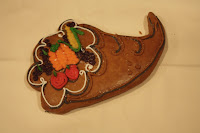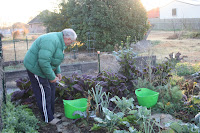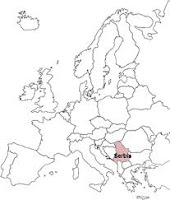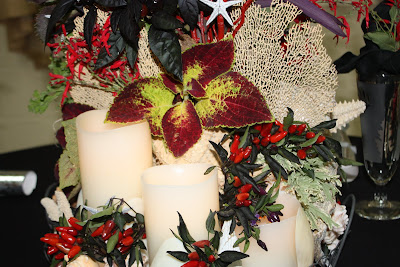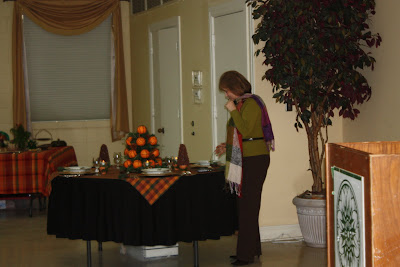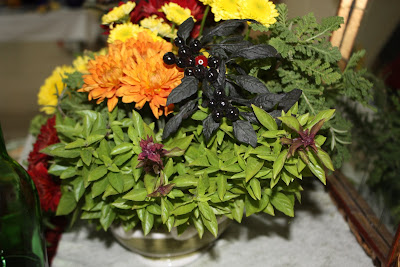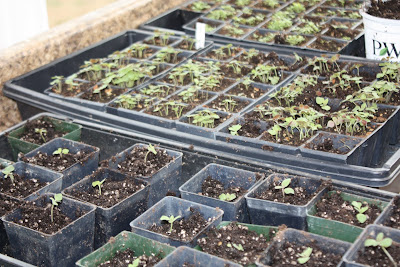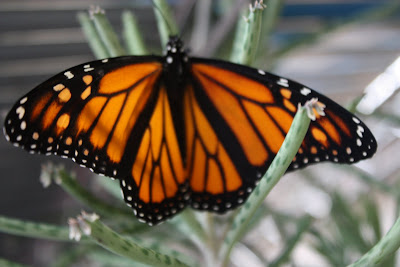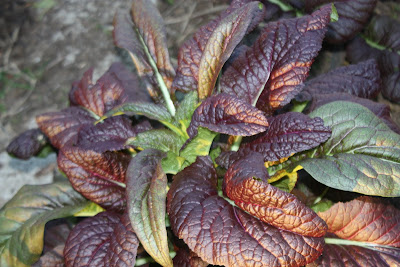End of November Gardening
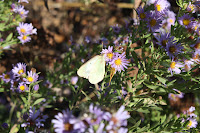
It's a tough time of year: Still 60 during the day but every sign of the fall garden has been knocked down by freezing nights. Just 10 days ago a few butterflies were lingering on the fall asters giving the illusion that winter might not come this year. Silly to even think about it, of course. But I know those late butterflies are hiding under the leaves out there and will emerge as early in the spring as they possibly can. Lettuce seedlings outside in a cold frame. The lettuce seedlings in the cold frames are doing quite well despite the 20-degree nights. I worry about them and wonder if they should come inside the shed and continue to grow under the lights in there. IN THE SHED The tropical plants that spend the summer by the hammocks get tossed into the shed at the first sign of cold weather. Later this winter, I'll take cuttings and grow more for next year. Plectranthus (on the left) blooms all winter in the shed. They continue to bloom inside the shed m


